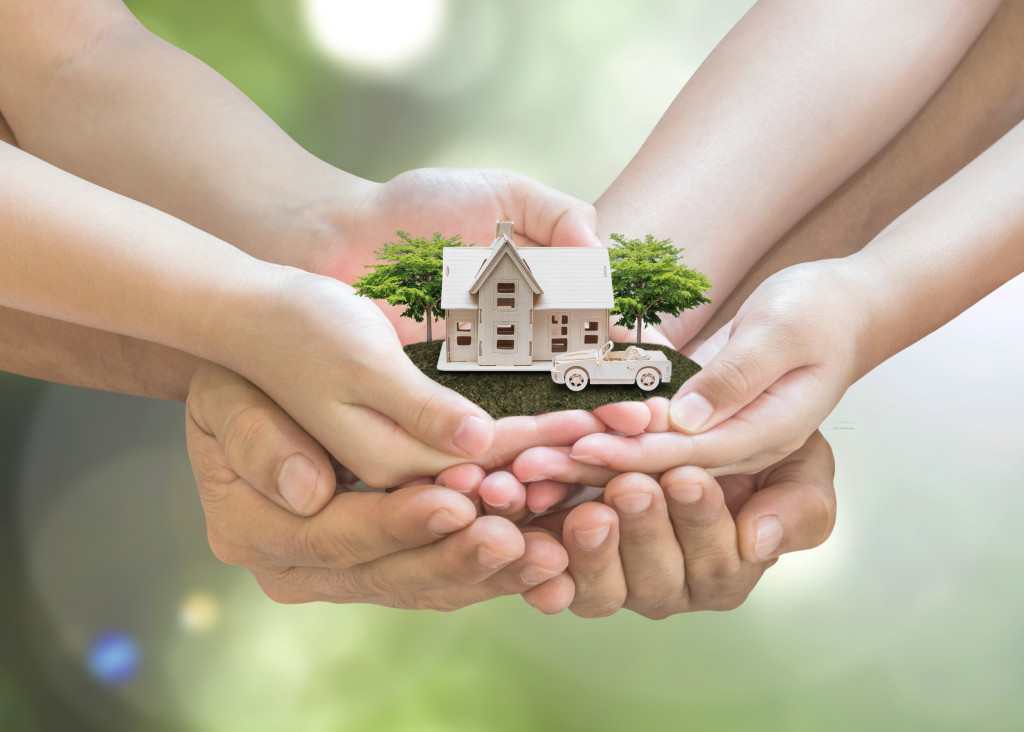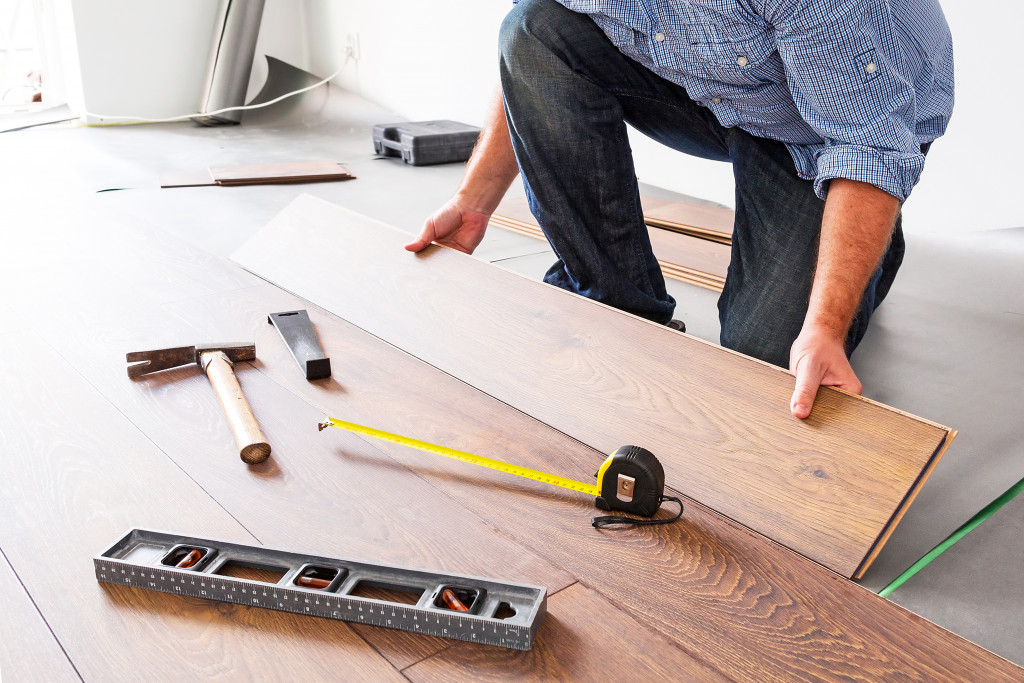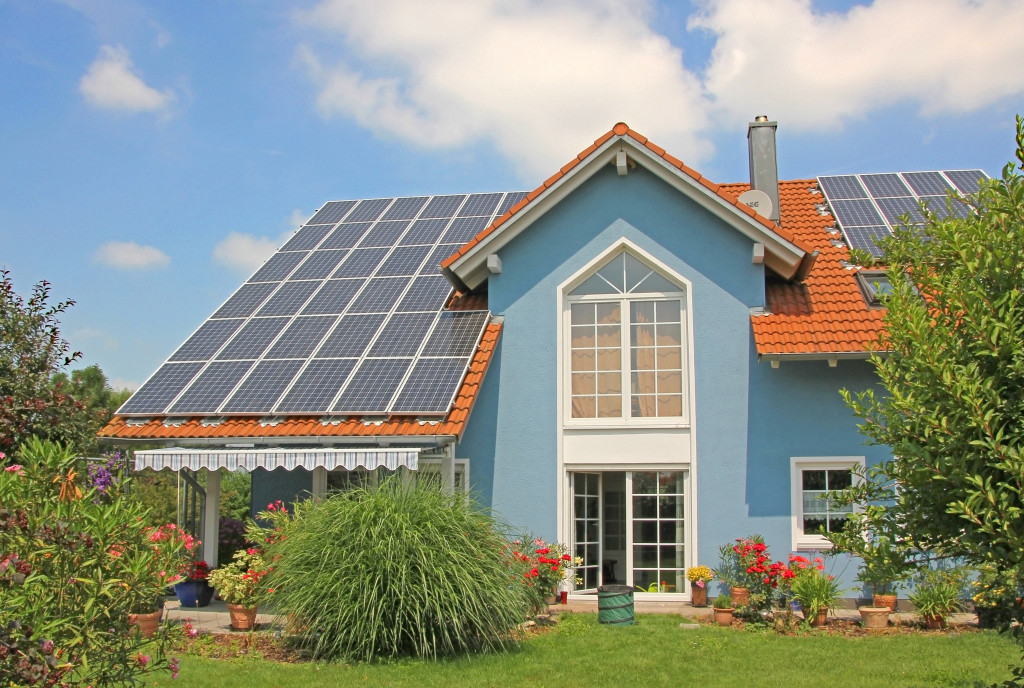- Sustainable home construction is an environmentally-friendly process prioritizes using renewable materials and energy-efficient technologies.
- Smart choices in materials can reduce landfill waste and energy costs and improve indoor air quality.
- Energy efficiency principles should be considered when developing a home’s layout and incorporating appliances.
- Proper waste management is essential to ensure successful sustainable construction practices and prevent soil, water, and air contamination.
- Sustainable landscaping should involve native plants for optimum environmental benefits and permaculture practices for a healthier environment.
Sustainable home construction is a process that prioritizes using eco-friendly and renewable materials, as well as energy-efficient technologies and practices. It involves creating homes that are comfortable and functional and have minimal impact on the environment. In recent years, there has been an increasing awareness of the importance of sustainable construction practices, driven by concerns about climate change and the depletion of natural resources.
These practices have many benefits, including reduced energy costs, improved indoor air quality, and decreased waste production. It also helps to conserve natural resources and protect the environment, making it a responsible and ethical approach to building homes.
This article will delve into sustainable home construction, exploring what it means and why it is essential. This will also provide all the information you need about sustainable home construction to make an educated decision when creating your perfect living space!
Sustainable Home Construction Practices
Sustainable home construction practices are becoming increasingly important as the effects of climate change become more evident. The best part about being conscious about your construction choices is that you can have a positive impact in the long run without sacrificing comfort or style. Here are some construction practices to keep in mind:
Use of Eco-friendly Materials
Constructing a home eco-friendly can require some innovative solutions and techniques. One of the best ways to ensure a sustainable build is to start with the building materials you use. Smart choices regarding materials can have long-lasting environmental benefits and pay off over time. Examples of sustainable materials range from using bricks and blocks made from recycled plastic or replacing traditional insulation with natural fiber alternatives like hemp, bamboo, wood fiber, and even sheep’s wool! Making these greener choices will help reduce landfill waste while reducing your home’s energy consumption levels.
Energy-efficient Design and Appliances
Sustainable home construction practices can save energy, reduce costs, and protect the environment. Incorporating energy-efficient design principles into a home’s layout and energy-efficient appliances can significantly contribute to eco-friendly homes.
From installing building materials with better insulation properties to including features like natural lighting to reduce electricity costs and installing motion sensors for better control of indoor lights, many considerations should be taken when applying energy-efficient design principles.
Proper Waste Management
Proper waste management is essential in ensuring successful and sustainable home construction practices. Knowing the best ways to properly dispose of materials and reduce waste generated from a project can help preserve our environment and resources for future use. By taking separate paths for organic and inorganic materials, sorting into recyclable and non-recyclable components, and properly labeling all containers for hazardous elements, homeowners can do their part in preventing soil, water, and air contamination.

Sustainable Landscaping
Sustainable Landscaping is an innovative and environmentally responsible way of managing the land and resources around us. It is all about designing landscaping features like gardens, walkways, playgrounds, and green spaces that use fewer resources and have a less environmental impact.
Native Plant Selection
When it comes to sustainable landscaping, selecting native plant species is an essential part of the process. Native plants naturally occur in a region and are best suited for the climate, soil, and topography specific to that area. Non-native plants, on the other hand, can be challenging to care for when grown outside their natural habitat, requiring more resources (such as water and fertilizer) to sustain them.
Permaculture Practices
Permaculture is an effective way to develop a sustainable landscape in any location. It employs principles from nature to create a productive and healthy environment that looks great and has many benefits for the environment.
The focus is on creating mutually beneficial relationships between plants, animals, and other living organisms instead of imposing specific or limited environmental objectives. This can include elements such as water conservation methods, biological pest control, composting systems, and cover crops, all of which help to reduce energy consumption while maintaining fertility in the soil.
Tree Maintenance
Tree maintenance is a vital part of any landscaping project. Doing it correctly and taking the necessary precautions keeps your trees and entire property happy and healthy. To keep your trees in pristine condition, you should call tree care experts specializing in sustainable landscaping to inspect, prune and treat them accordingly.
Regular maintenance helps to protect against disease and pest infestations and keeps them growing properly over time. Additionally, the experts advise landowners on strategic areas for replanting trees and which types of trees are best suited for the local environment. Ultimately, with regular tree maintenance by experienced professionals, you can have a beautiful landscape that you can proudly display all year round!
Benefits of Sustainable Home Construction
Sustainable home construction offers numerous advantages that are beneficial both in the short and long term. It uses energy-efficient materials and building methods to reduce a resident’s environmental impact and overall ecological footprint.
Improved Indoor Air Quality
Sustainable home construction promotes improved indoor air quality in numerous ways. Typically, sustainable homes use lower-VOC materials, such as zero-VOC paints, natural linoleum, and cork flooring. These low-toxicity materials help improve air quality by reducing the number of pollutants released indoors.
Furthermore, when it comes to sustainable building, advanced ventilation systems are often implemented; these circulate fresh outdoor air inside the home more frequently and provide additional protection from airborne pollutants.
Energy Cost Savings
Using innovative and sustainable home construction techniques can significantly reduce energy costs. With suitable materials and strategies, such as improved insulation and solar panels, homeowners can enjoy a lowered reliance on traditional energy sources.
This can also generate long-term savings due to decreased running prices of utilities monthly. In addition, modern home-building methods reduce environmental impact by cutting down on waste created during the process.
Reduced Environmental Impact
Building a sustainable home can have a profoundly positive effect on the environment. Whereas traditional construction methods utilize materials with little to no consideration for their impact, sustainable construction focuses on using products and processes that minimize waste, pollution, and other damaging side effects. Furthermore, the durable nature of sustainable materials typically reduces the energy needed to replace them.

Sustainable home construction not only benefits you monetarily and environmentally but also improves your family’s health. By utilizing eco-friendly materials, energy-efficient designs and appliances, and a properly managed waste system, sustainable practices for home construction strip away toxins from the air that you and your loved ones breathe.
Moreover, optimizing landscape through native plant selection, permaculture use, and proper tree maintenance helps expand your direct impact on the environment beyond the four walls of your home. The synergy of sustainable construction practices creates positive environmental vibes that pay off both ecologically and psychologically in the long run. We challenge you to take a stand by choosing sustainability—it might be one of the best decisions of your lifetime!


